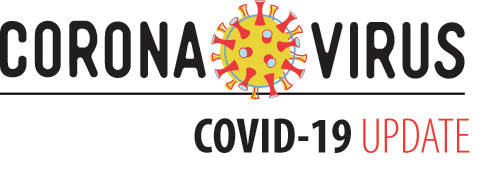
In a signaling that people are looking to get past the Covid-19 pandemic, The New York Times announced that its New York Times Covid-19 Tracker will no longer be updated.
Many of the metrics The Times-Gazette has used since the pandemic started in 2020 have either been phased out or tracked so intermittently that their statistics are difficult to report consistently. Even statistics from the Center for Disease Control and Prevention’s (CDC) Covid Data Tracker show no new data for Highland County.
According to Ohio Department of Health statistics which were last updated on April 18, Highland County has a case rate of 30.1 cases per a population of 100,000, which ranked 25th of the 88 Ohio counties.
The pandemic technically started for Highland County on March 24, 2020, when the first new case was reported, according to The New York Times Covid-19 Tracker. However, the pandemic didn’t truly begin for the county until mid-July 2020 when it saw multiple days in a row of mid-single-digit new cases.
The pandemic really came to Highland County in October 2020 when the first major spike arrived, as the county saw its first double-digit case rate. Following that, Highland County continued to see multiple weeks of double-digit new cases, which didn’t end until February 2021. Much like across the country, the virus started to trail off in the spring and summer months, and that was true of this first trail-off as well, as it looked like the pandemic dying out.
Unfortunately, that was not the case, because starting in August 2021, Highland County and much of the country, saw the biggest spikes of the entire pandemic. There were two notable spikes during this period, with one going as high as 65 new cases in one day and then the next being the highest of the pandemic, that being 115 new cases in a single day. This significant period of new cases didn’t end until mid-February until once again it looked like the pandemic was over.
After that period, Highland County saw incremental increases until later summer when it started to spike some days and then see nothing other days. This continued until July 2023, when summer brought the lulls in cases that we’ve come to expect. Starting around September 2023, the county’s cases went up to double-digits for a couple of weeks until going down to single-digit cases around a month ago.
Overall, the past few years of the pandemic has shown that in the late spring and summer months, cases fall, and they go up as fall and winter approach. The pandemic might never be as high as 2021, but the trends have been consistent in the respect that cases go up as it gets colder and flu season rolls around.
In the U.S. as a whole, according to the CDC’s Covid Data Tracker, all four of the metrics were falling. The ones falling most evidently were hospital admissions due to Covid-19 down by 13.8 percent and the percentage of emergency department visits down by 19.9 percent from the most recent week.
Reach Jacob Clary at 937-402-2570.

